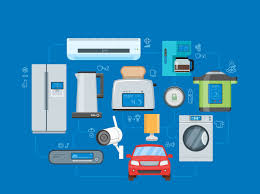2 017 was an interesting year -- 2018 should overcome a few obstacles. Probably the most significant innovation during 2017 was the growth of the Voice First technology market -- but judging by the aisles of gadgets in places like Best Buy, everything else is changing as well. CES is next week, and with it more speakers, TVs, and gadgetry than is seen in Best Buy or anywhere else during the year. But even as technology leapfrogs and crawls forward, obstacles to broad adoption for older adults remain. Hopefully interest in mitigating social isolation among older adults will lead to the role technology could play. But to make a real difference, here's a look at five areas for improvement in 2018:
017 was an interesting year -- 2018 should overcome a few obstacles. Probably the most significant innovation during 2017 was the growth of the Voice First technology market -- but judging by the aisles of gadgets in places like Best Buy, everything else is changing as well. CES is next week, and with it more speakers, TVs, and gadgetry than is seen in Best Buy or anywhere else during the year. But even as technology leapfrogs and crawls forward, obstacles to broad adoption for older adults remain. Hopefully interest in mitigating social isolation among older adults will lead to the role technology could play. But to make a real difference, here's a look at five areas for improvement in 2018:
Broadband pre-requisites and the home. As of November, 2016, 51% of people aged 65+ had broadband to the home compared to 81% of those 30-49. What are the barriers? Other than lack of interest and perceived benefit, cost can be a barrier, with a median cost of $80 per month by mid-2017. Setting up Wifi and troubleshooting Internet connections might be a barrier – and once set up, knowing how to fix problems. But the real barrier (for this and other complex connections) may be finding the right training that is both accessible and repeatable as technology changes. Maybe training options in 2018 will become ever more obvious, given the growing dependency on online access to nearly every service, including most banks.
Mobile device price and built-in obsolescence. The much-publicized slowing down of older iPhones in 2017 -- was it lack of transparency or was it deliberate obfuscation to urge people to upgrade within 12-24 months? Whichever -- most outside the media and geek-dom apparently did not care. The smartphone replacement cycle still stands at 2-years – possibly longer for lower-income adults, since average replacement price is now $400. And that does not include a monthly plan, which can run $60-80 per month for an individual user (grand total annually, nearly $1000 for 2-year owners). Fixed and lower income older adults will likely make do if they are part of the 42% of the 65+ who actually have smartphones.
Car user interfaces – baffling or ignored. Like much of the technology we encounter, car user interfaces have evolved because engineers found it possible to add features to them. Were these requested – or just invented because they were possible? And did they turn out to be a distraction? (Hint: it’s been a bad case of the latter.) So what to do if baffled by the latest and greatest? Perhaps be one of those who keeps the car the longest: “Vehicles 16 years and older are expected to grow 30 percent from 62 million units today to 81 million in 2021.” And the people driving? Consumer Reports notes that older adults might behind the wheel substantially longer than their ability to drive. Considering both automotive feature creep and the advancing age of the oldest drivers, this conundrum will worsen in 2018.
Identity and privacy protection. Let’s hope that 2018 is better than 2017. It was a bad year for data breaches, some of which were of spectacular scope and scale. Let's hope that the health-related data breaches, including insurance and healthcare delivery, were not predictors of similar problems in 2018. And so far, no policy actions have appeared following the Equifax breach that impacted 145 million people. The net impact of well-publicized hacks and breaches on older adults os more caution and fear online -- and guidance from the FTC about online practices. Concern may be justified, but may also keep people from accessing services and connections that they really need. Possible public policy changes could help protect consumer privacy -- if they move forward.
Home automation -- is it useful for older adults? In conjunction with Voice First technology, there are unforeseen home automation benefits -- as outlined in a recent report from Front Porch -- which could be deployed in other senior living communities as well as private homes. The report noted the capability for older adults to adjust lighting and temperature by speaking a request. Along with voice-initiated automated calendar integration, reminders, and timers, the home environment truly become a hands-free zone. It may be that other smart home trends that surface next week at CES could be applied in senior settings. And it could also be that 2018 is the year of smart(er) appliances, robots and even wearables -- joining the trend of Voice First technology in the home.

 017 was an interesting year -- 2018 should overcome a few obstacles. Probably the most significant innovation during 2017 was the growth of the
017 was an interesting year -- 2018 should overcome a few obstacles. Probably the most significant innovation during 2017 was the growth of the